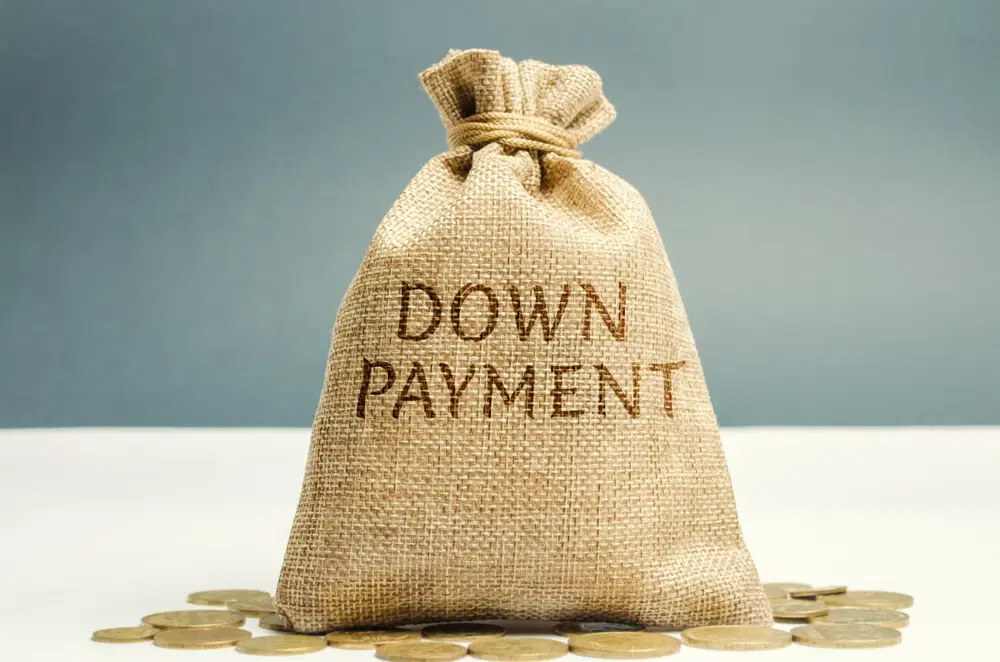
Loans
•05 min read

Buying a home is one of the most significant financial decisions you'll ever make. Before you can step into your dream home, there's one crucial step—making the down payment. This article explains how much down payment for home loan is typically needed, why it matters, and how to plan strategically for this key financial milestone. Read on to uncover actionable strategies that can guide you in saving for your home, along with useful tools that simplify the planning process.
Generally, A down payment is the upfront amount you pay out of pocket when purchasing a home. It is expressed as a percentage of the property’s value and demonstrates your commitment to the investment. Lenders require this payment to reduce their risk, knowing that you are financially invested. An increased down payment often translates into benefits such as lower Equated Monthly Installments (EMIs) and reduced interest rates, making the overall loan more manageable.
In India, most lenders require a down payment in the range of 10%-20% of the property's cost. Generally, if you are looking at properties valued below a certain threshold, a 10%-20% down payment is standard. However, for properties priced above ₹75 lakh, regulations may stipulate a higher down payment requirement, sometimes up to 25%, due to loan-to-value (LTV) ratio caps. In certain regions such as Tamil Nadu and Maharashtra, local property costs and lender policies might influence the final percentage.
When planning, using a home loan down payment calculator can prove invaluable. Such tools help you input your property value and preferred percentage to arrive at your exact down payment requirement, making the entire process clearer and more predictable.
The ideal down payment is influenced by multiple factors. Firstly, the property value plays a major role; higher-value properties naturally require a larger upfront investment. Secondly, individual lender policies and specific loan schemes can affect the minimum required down payment, with some lenders setting benchmarks you must meet. Income stability and a strong credit score also add weight to your application, potentially offsetting the need for an extremely high down payment. Additionally, government schemes like PMAY may offer options that allow for a lower down payment for eligible borrowers.
Opting for a larger down payment has clear financial benefits. A reduced loan amount means you spend less on interest over the life of the loan, which can offer considerable saving advantages. Also, banks may reward you with lower interest rates and smoother, faster loan approvals, as a larger down payment lowers their exposure to risk. With smaller EMIs, budgeting becomes less stressful and more predictable, enabling you to manage other financial commitments more efficiently.

While a smaller down payment may initially seem appealing due to lower upfront costs, it often leads to higher loan amounts, meaning you end up paying more interest over time. Moreover, should property values fluctuate, having invested less upfront may result in reduced equity, making refinancing or selling in challenging market conditions more complicated.
One of the best starting points is establishing a clear savings goal. By deciding on a timeline—be it 5, 10 years or more—you create a structured plan for your finances. Tata NeuMoney’s down payment calculator can assist in determining the precise amount you need to save based on your desired property value and loan terms. A clear savings target helps in aligning your current expenses with your long-term dream of homeownership.
To build your down payment fund, consider following the simple 50/30/20 rule: allocate about 50% of your income to essentials, 30% to discretionary expenses, while directing the remaining 20% towards savings. Opening a dedicated savings account can also work wonders; automate monthly transfers so that your down payment fund steadily grows without having to rethink each deposit. Additionally, explore safe investment options such as fixed deposits, recurring deposits, or government-backed schemes like PPF. For those comfortable with a bit more risk, mutual funds might offer higher returns over a longer term.
Maximising your savings often comes down to careful budgeting and identifying unnecessary expenses. Review your monthly expenses and see if adjustments like reducing dining out or cancelling unused subscriptions can free up extra funds. Moreover, if feasible, consider extra income streams such as side gigs or freelancing, which can bolster your savings efforts. Keep a regular check on your savings plan and be open to making adjustments to stay on track with your goals.
Modern financial planning is immensely simplified with digital tools. A down payment calculator, for instance, enables you to determine the exact amount by inputting parameters like property value and desired down payment percentage. Tata NeuMoney provides user-friendly tools that not only calculate the down payment but also offer insight into how this figure influences your overall loan amount and EMI. Similarly, using a home loan EMI calculator aids in understanding your monthly repayment commitments, ensuring that your budget aligns with future financial obligations.
Sometimes, having an expert at hand can be the difference between a well-planned home purchase and unnecessary financial strain. Financial advisors can review your specific circumstances and offer tips on optimizing your savings and meeting lender requirements. With personalised guidance from Tata NeuMoney’s advisory services, you can develop a savings plan that is tailored to your lifestyle, ensuring a smoother path toward homeownership.
-1e18e07d-89f4-4e70-9a99-1bf8d854b9d8.png&w=3840&q=75)
On your loan disbursal with Tata NeuMoney, you also receive 500 NeuCoins, which serve as an added bonus to your financial journey. These rewards offer additional savings, reinforcing the advantage of a planned and well-managed home buying process. The digital-first approach ensures that every step, from calculating your down payment to finalising the loan, is streamlined and hassle-free, making the process as rewarding as it is efficient.
Lenders in India typically require 10%-20% of the property value as a down payment, though this can vary based on the specific loan amount and type of property.
Minimum down payment requirements can range based on the lender's policies; for example, certain schemes may require a slightly higher percentage for properties above a certain price threshold.
You can use a down payment calculator by entering the property value, desired percentage, loan tenure, and interest rate to accurately estimate your required upfront amount.
Government schemes like PMAY can offer eligible borrowers stipulations for a lower down payment, sometimes enabling a reduction to as low as 5%-10% of the property value.
Your home loan down payment is a vital part of the journey toward owning your dream home. By understanding the typical down payment requirements and the factors influencing them, you can plan effectively and make informed decisions. Comprehensive planning, smart budgeting, and utilising tools like Tata NeuMoney’s down payment and EMI calculators can dramatically simplify the process. Whether you decide to pay a higher down payment for improved loan terms or plan carefully around a smaller one, the key is aligning your financial strategy with your long-term goals. With careful planning, consistent savings, and expert guidance, you are well on your way to making homeownership a wonderful reality.